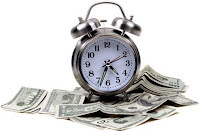 As a performance metric, proposal win rate seems to invite its fair share of skepticism. Some question the reported industry median of 40%, claiming it's skewed and unrealistic. Indeed, part of the problem is inconsistency in how the number is derived. Many firms mix project add-ons and sole source awards into their calculation (it should include only competitive proposals). In my own informal surveys, as well as my experience working with different firms, I find that most fall short of the 40% benchmark. Twenty to thirty percent is more common.
As a performance metric, proposal win rate seems to invite its fair share of skepticism. Some question the reported industry median of 40%, claiming it's skewed and unrealistic. Indeed, part of the problem is inconsistency in how the number is derived. Many firms mix project add-ons and sole source awards into their calculation (it should include only competitive proposals). In my own informal surveys, as well as my experience working with different firms, I find that most fall short of the 40% benchmark. Twenty to thirty percent is more common.
Still I think win rate is an important metric. Even if the 40% mark is a bit inflated, I recommend that firms strive for nothing less. According to PSMJ and ZweigWhite, the top performing firms achieve win rates of 50 to 60%. If your goal is to be among those top tier firms, then I'd suggest a target of 50%. To conclude that these numbers are unrealistic is to sell your firm short. I've reviewed hundreds of proposals over the years, and I can attest that there is much room for improvement.
So how can you improve your win rate? Below are some general suggestions based on my experience as a corporate proposal manager and consultant:
Submit fewer proposals. This is the easiest, and for many firms, the most effective step toward improving your win rate. This assumes, of course, that you're currently submitting proposals that you have a very low probability of winning--which I find is true of most firms. Cutting back on proposals is difficult for many. We can all point to one of those rare exceptions where we won one we had no business winning. So we keep trying, hoping to hit the jackpot once again.
But keep this in mind: Every hour spent writing a losing proposal is an hour diverted from doing something more productive. The primary goal in being more selective is to redistribute your limited business development resources to activities with a higher probability of success. My philosophy is to do fewer things better. If you're only winning 30% of your proposals, might you be better off if you cut the number of submittals in half and put twice the effort into the proposals you do submit? (By effort, I mean both the sales process in advance of the RFP and the proposal itself.)
I'll offer evidence this works. I worked with a 100-person engineering firm over several months helping them overhaul their business development process. The year I started, they submitted 136 proposals and won 26% of them. I encouraged them to be much more selective and helped them institute a formal go/no go process. The following year, they reduced the number of submittals to 80 and won 46% of them. Business development costs remained static despite a substantial increase in sales activity. Here's the good news: Sales increased by $3 million.
Position your firm in advance of the RFP. A simple way to reduce the number of losing proposals is to implement a "no contact/no go" policy. That means if you haven't been talking to the client before the RFP is released, it's automatically no go. You might allow a few exceptions to the policy, but very few. When I suggested this policy at a client workshop some time ago, the firm's CEO said, "If we followed that policy, we wouldn't be doing enough proposals to sustain our business." I asked him how many proposals they'd won where they hadn't been talking to the client before the RFP. "It's pretty rare," he admitted.
I've never seen data on it, but would estimate that most firms win less than 5% of such proposals. In other words, it's a waste of time. You'd be better off devoting that time to building a relationship with other clients with upcoming opportunities. I've had several clients confide in me what we've always suspected: They have a pretty good idea who they're going to hire before the RFP ever goes out. What does that tell us? Win the proposal before you write it!
The best way to do that is to become an indispensable resource to the client. Offer advice, insight, and information. Demonstrate your expertise, don't just tell the client about it. Also, demonstrate your commitment serving the client well (it's usually not that hard to out-serve the competition). Don't wait until after contract award to be useful to the client. Instead make it difficult for the client to consider anyone else.
Ask the right questions. One of my favorite questions for the proposal team is, "Why is the client doing this project now?" I seldom get a satisfactory answer. One firm principal even suggested recently that it didn't matter; all that counted was that his firm could do the job. They didn't win, as you might guess. If you don't know the why behind the project (and we often don't), then you'll be hard pressed to come up with the best what and how.
It helps to recognize the three levels of client needs. Technical professionals, especially engineers, are prone to focus on the client's technical needs. But these only partially define the project. There are always strategic needs that drive the need for the project. Strategic needs are those that relate to the overall success of the client's organization. They may be financial, competitive, operational, or political in nature. Finally, you don't want to overlook personal needs. Each client contact has different priorities, expectations, and concerns. In composite, these largely comprise the terms of a successful project.
Your proposal should address all three levels of client needs. I could recount several stories where the technical issues--the things we're inclined to emphasize--really weren't that important to the client (I'm sure you could too). They were more interested in how we could meet their strategic and personal needs. So you need to ask the questions that enable you to uncover these perspectives. You might want to download the form "Key Proposal Planning Questions" from my website to help in this regard.
Make your proposal stand out. The objective, naturally, is to be different. Why else would the client select your proposal? Yet I've found a remarkable sameness in the numerous proposals I've reviewed. I'm not suggesting anything outrageous. In fact, I see two obvious, straightforward opportunities to set your proposals apart:
- Focus on the client, not your firm. The vast majority of proposals I've seen center on the preparer: "Look at us! Aren't we something special." I recognize that the client usually invites such self-promotion in the RFP. The selection criteria weigh heavily on qualifications and experience. Be responsive, but don't fall into that trap. Demonstrate your qualifications through superior knowledge of the client and the project. Address the client's priorities and concerns (of course, this requires that you did your homework up front). Use personal language--the word "you" is the most persuasive in the English language. Make the client the centerpiece of your proposal, not your firm.
- Make it skimmable. Do you really think client reviewers read your proposal cover to cover? I don't either. They skim, looking for the key information they need to make a decision. Unfortunately, most proposals are not easily skimmable. They require too much reading, too much effort. Put the most important messages in your proposal in skimmable form--bullets, boldface, graphics and photos, short paragraphs, etc. Study USA Today for ideas. Also, it's helpful to know how the client handles your proposal. Which sections are read first? What information is used in the initial screening process? Then construct your proposal (with custom-labeled tabbed dividers) to make it easy to navigate.
Of course, there is much more that I could say on this topic. But grasping the principles outlined above is a good start. For a more comprehensive treatment of the topic, check out my white paper Preparing Winning Proposals. And for strategies once you've made the shortlist, you might find the article "You Made the Shortlist: Now What?" helpful.
Got any other winning strategies you'd like to share? I welcome your ideas!
 The average employee has 79 unbilled days a year. Surprised? That’s based on the industry median utilization of 60%, and doesn’t include vacation, holidays, or sick leave. That means the average 100-person firm has 7,900 days of unbilled time that can be applied to various corporate functions and initiatives (you can do the math to determine what’s available in your firm).
The average employee has 79 unbilled days a year. Surprised? That’s based on the industry median utilization of 60%, and doesn’t include vacation, holidays, or sick leave. That means the average 100-person firm has 7,900 days of unbilled time that can be applied to various corporate functions and initiatives (you can do the math to determine what’s available in your firm). 

